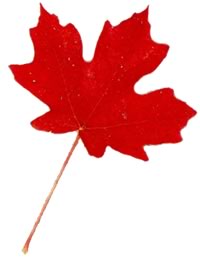Home → Kids' Page → Glossary of Tree Terms
 Glossary
of Tree Terms
Glossary
of Tree Terms
- Cambium: A single layer of cells in the tree’s trunk that produces the new wood and bark
- Conifer: Cone bearing trees; the "evergreens"
- Crown [of the tree]: Branches, twigs, buds, leaves, flowers and fruit.
- Deciduous [leaves]: All leaves drop in the autumn; not evergreen
- Fascicle [leaf]: A cluster of conifer leaves
- Fruit: The seed-bearing part of a tree
- Habitat: The place where a plant usually grows, e.g., a rocky, moist, well-drained, etc…
- Heartwood: The area next to the pith, which is composed of deal cells and serves as support
- Hardwood: Term used to describe all broadleaved trees. These tree species are deciduous, retaining their leaves only one growing season. Despite the term, some "hardwoods" such as the aspens, have wood that is relatively soft.
- Inner bark: (phloem) Conducts usable food from the leaves to the cambium to nourish it or to storage areas in the wood.
- Leaf: Stalk and blade of hardwoods: needles and scales of conifers.
- Leaflets: Smaller leaf units or leaflets which together form a compound leaf.
- Midrib: [leaf] The large central vein
- Medullary or wood rays: These rays radiate out from the center of the tree, and serve in lateral conduction and as food storage areas. They are most visible in a cross-sectional view of the tree trunk.
- Outer bark: The area of the tree trunk composed of dead cells. It insulates and protects inner tissues from disease infections and drying.
- Phloem or inner bark: Conducts usable food from the leaves to the cambium to nourish it or to storage areas in the wood.
- Photosynthesis: This is the process that occurs in the leaves. From energy produced by sunlight, the leaves combine carbon dioxide from the air and water from the soil to produce carbohydrates. Oxygen is released in the process. Carbohydrates plus fats and proteins are the plant foods necessary for growth and respiration of the tree.
- Pistillate: The part of the leaf that contains female portions of flowers, or the pistils
- Pith: The central, soft part of the stem.
- Roots: Root hairs absorb water and mineral salts from the soil. Larger roots anchor the tree and store nitrogen and carbohydrates.
- Sapwood: The area on the outer side of the trunk, which contains the sap conducting tubes. Sapwood is usually lighter in color, but it darkens with age and becomes heartwood. Heartwood and sapwood together comprise the xylem.
- Seed: That part of the fruit capable of germinating and producing a new plant.
- Softwood: Term used to describe all needle-leaved trees. These species are typically evergreen, retaining their leaves through two or more growing seasons. Larches, including tamarack, are exceptions, being deciduous "softwoods"
- Tree: A woodyplant, generally single-stemmed, that reaches a height of more 15 feet at maturity. A tree has three major parts: roots, trunk and the crown.
- Trunk: The main body of the tree.
- Wood or medullary rays: These rays radiate out from the center of the tree, and serve in lateral conduction and as food storage areas. They are most visible in a cross-sectional view of the tree trunk.
- Xylem: The area of the tree trunk that is comprised of the heartwood and sapwood.
Sources:
The Maine Forest, Maine Forest Service Fact Sheet, April 2000
Forest Trees of Maine, Department of Conservation’s Maine Forest Service, 1995
The Forests of Maine, University of Maine’s Water Resources Program, May 1994